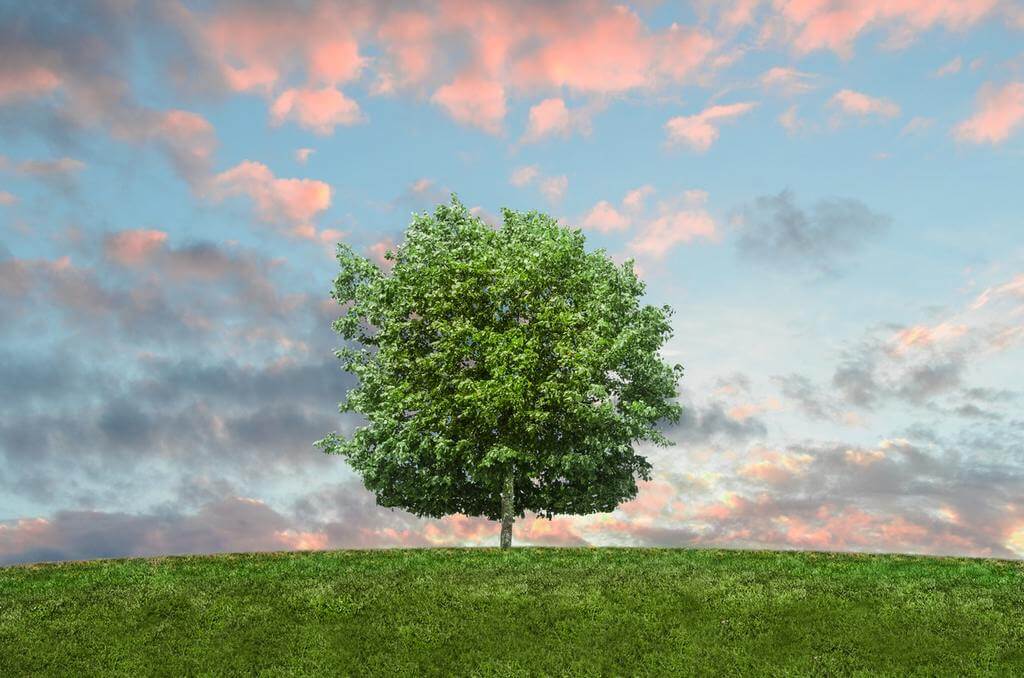The last article was already about the tree and the devastating consequences of its disappearance. The following text will once again deal with the topic "tree" - it would be a shame to dedicate only one report to it. This time, however, we will leave out the dark sides of deforestation and focus on exciting, interesting and astonishing facts.
The last article was about the tree and the devastating consequences of its disappearance. The following text will once again deal with the topic of the tree - it would be a shame to devote only one report to it. This time, however, we will leave out the dark sides of deforestation and focus on exciting, interesting and astonishing facts about the tree. Let's go!
Switzerland as a country of trees
The fact that Switzerland is home to numerous species of trees is obvious even if you know nothing about trees. Everywhere there is a place for them and thus the opportunity to literally take root - be it on a street somewhere in a city or in our own garden - trees belong to us. Depending on their location, they have a completely different meaning. A tree on the street, for example, lends it much more charm. The tree in the garden, on the other hand, may provide a refuge for the cat or serve as a sought-after source of fruit. Regardless of where and to what extent they occur: Trees have always been a part of our landscape and our culture.
In the following, "WaldSchweiz" offers you some exciting facts about our trees:
- One third of the country's surface is covered with forest. Approximately 535 million trees adorn it.
- On the pedestal of the most common trees are the spruce, the fir and the beech.
- The average tree in our country lives to be 100 years old, but the oldest trees actually live to be 1,500 years old!
- The tallest tree in Switzerland is the Douglas fir, which originates from North America and is 61 m high. You can admire it in Madiswil (BE).
- If you are one of those who can't open your eyes because of annoying hay fever, then stay away from the aspen tree! It produces up to 500 million pollen in spring. Nasty!
- About 5 millionm3 of wood are harvested per year. Half of this is sold as "trunk wood" and one third is used as "energy wood". In addition, 150,000 Christmas trees are harvested each year (which are then usually disposed of again after a few days). How about renting a Christmas tree in a pot instead? E.g. at baumfreunde.ch!
- About 45% of the forest provides valuable protection, e.g. from avalanches or rockfall.
- Our forest is considered to store about 150 million tonnes of carbon!
- Do you heat your flat with oil? Why don't you switch to wood? You can save more than 3 kg ofCO2per litre.
Structure of a tree
Trees are considered to be very robust and can withstand quite a lot (this may also explain their great age). But how do they manage it? To find out, the following facts about the structure of a tree will certainly fascinate you. Have fun!
- The tree belongs to the woody plants. Here, the trunk serves as the body, whereby this consists of numerous layers, which all fulfil a specific function.
- The roots are mainly underground. They provide the tree with support and absorb nutrients and water. In addition, they function as storage organs for the starch stored during photosynthesis.
- Anyone who has ever marvelled at the cross-section of a tree trunk has certainly noticed that it consists of numerous annual rings. These document the age as well as the fateful years of a tree. Wide rings emerge, for example, when there is sufficient rainfall. Thin rings, on the other hand, form due to drought or pest infestation.
- In spring, nature comes back to life after its winter sleep. So do the buds of the leaves that will adorn the branches of the tree. However, the leaves or needles do not only serve their purpose visually, because with the help of photosynthesis, the sugar and starch that are important for the tree are produced.
- The tree's adaptability is demonstrated by its ability to find ways to resist climate change. The increased CO2 content in the air leads to increased water use efficiency by regulating the stomata in the pores of the leaves to maximise the uptake of carbon while minimising the loss of water. According to the WSL research institute, this will not affect the amount of greenhouse gas in the atmosphere, but it does show that nature does not simply accept climate change.
Benefits for the environment
Like everything that nature produces on its own, the tree is a small - or in its case rather large - masterpiece. It is designed in such a way that it can adapt perfectly to its environment and thus persist for a very long time without further ado. As if this were not enough to make us realise again how valuable our nature is, the tree also brings benefits to the environment - and ultimately to us as well. At the latest after reading the following facts, the tree should be recognised as a true wonder of nature.
- The tree as an efficient CO2 reservoir. Trees remove the greenhouse gasCO2 from the atmosphere for growth reasons and thus make an important contribution to climate protection. On average, a single tree binds about 10 kg ofCO2 per year. A huge achievement!
- The tree as part of the water cycle. Trees are responsible for evapotranspiration, i.e. water evaporating and causing precipitation elsewhere through cloud formation. In this process, water is absorbed by the roots or in the form of raindrops and released again.
- The tree as the lung of the city. Trees not only filter the air, they also emit vital oxygen. A single tree can absorb up to 5 kg of air pollutants and produce 130 kg of oxygen in the same period.
- As part of the forest, the tree makes an important contribution to soil storage by generating buffer capacities that are available when it rains and thus protect against erosion.
Although the tree occupies a large part of our land area, its existence should not be taken for granted. Trees make up an important part of our environment by bringing many useful properties. However, in order to not only draw from their benefits, I see it as our duty to protect the tree as much as possible. After all, in the end we all benefit from it.





















1 comment
In fact, most people from other countries do not know that one third of Switzerland's land area is covered with forest. A considerable proportion of my garden also consists of trees, which makes it very different from the gardens in my neighbourhood. Accordingly, it is not surprising that regular and intensive tree care is of great importance to me.
https://www.hainke-iding.de/leistungen